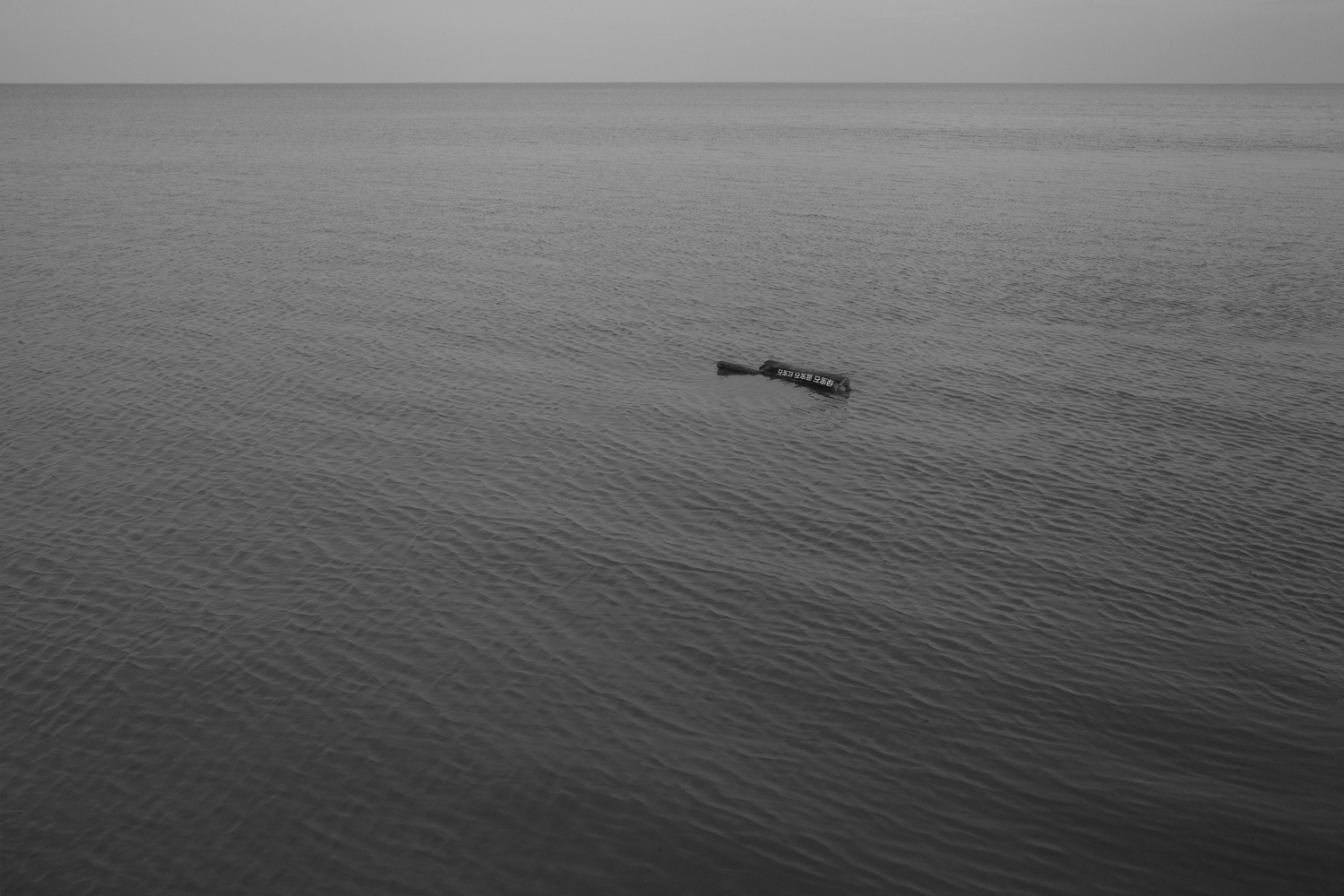
DEC 21, 2018 – JAN 14, 2019
On December 21, at 7pm, the Zarya Air Workshop will celebrate the opening of “Invisible Shore,” an exhibition of photographs by Ma Haijiao (PRC), taken while the artist was in residence in Vladivostok. The exhibition will be on view until January 14, but to visit after the opening, you will need to first check in at the reception desk.
As the first Chinese artist to participate in the residency, Ma Haijiao reflects on the relationship between China and Russia, as it touches on both the history and present of Vladivostok. The two photographic series are based on the artist’s own impressions as he visited the city for the first time, serving as a kind of poetic interpretation of his experience.
As is well-known, a Chinese diaspora has lived in Vladivostok since the moment of its founding. From the end of the 19th century through the beginning of the 20th century, this diaspora was quite substantial, wielding considerable influence on the development of the economy and the urban lifestyle in general. After the 1930s, any connections between the city and China would be severed for decades, so that it was only in the 1990s that the markets started to fill up with Chinese recently that Vladivostok became a destination for Chinese tourists.
The history of this relationship, so specific to Vladovostok, served as the starting point for Ma Haijiao’s work. The series “Invisible Shore” mobilizes the fragments of Chinese text integrated into the city’s streets. During his first few excursions around Vladivostok, the artist was impressed by the abundance of Chinese phrases embedded within daily life as a familiar part of the visual appearance of the city. To come across one’s native tongue in such a big country was an unusual experience for the artist, who had yet to encounter this phenomenon in his travels.
At the same time, the Chinese text that one can find in Vladivostok has a very distinct character; among the examples are such phrases as the traditional "Wishing You Safety Wherever You Go" (a typical New Years’ greeting in China) or “Let It Go” (one of the basic principles of Buddhism) on a pendant in the interior of a taxi, or “Unlimited Meat” and "The Landscape Here is Beyond Compare" on a restaurant sign. The artist collected these assorted fragments of text and transferred them onto pieces of wood, which he released into the waters around the border areas.
Some of the photographs were taken on Lake Khanka, which runs along the border between China and the Russia Foundation. Others were taken in the waterways of the Bay of Peter the Great and the waters around Russky Island and Amur Bay. The artist sees water as the element connecting the two countries, since its constant fluidity allows it to endlessly flow back and forth from one shore to the other. The title of this series refers to the fact that somewhere beyond the horizon, on the opposite edge of the vast expanse of water lies another land, unknown to us, which is too far away for us to see.
The second series, “In a Quiet Place,” refers to the role of the Chinese diaspora within the history of the city. The artist imprints standard advertising banners with the phrase, "The worst thing that the people have done for us is that they all left here at once." This sentence is an homage to a quote from a book by Dmitry Ancha and Nelly Miz, titled The Chinese Diaspora in Vladivostok: The Pages of History, which describes the life of the Chinese population at the turn of the 20 th century: The worst thing that the Chinese have done for us is that they all left Vladivostok at once." It is well-known that the Chinese work force was indispensible to the city and representatives from various nationalities lived in close partnership with one another. However, the artist is putting his emphasis not so much on the significance of the Chinese diaspora, as on the universality of the statement that any nationality that abandons its home leaves palpable wounds behind. And one of the examples of this trauma could be the Far East in the 1930s, when, following the shift in the USSR’s policies regarding foreign residents, the large majority of the Chinese population was deported from the region.
This exhibitions of photographs by Ma Haijiao concludes the 2018 season of the residency program, which hosted 20 individual artists and collectives from 10 countries around the world.
*Ma Haijiao (born 1990) is a photographer and video artist who lives and works in Beijing. He studied at the China Academy of Art, where he received both a BA and later an MFA. His art practice takes up an enduring concern with life’s daily routines, and taking this as his starting point, he traces its logic to shape video narratives and other works. Among his recent exhibitions are “July in Berlin” (Migrant Bird Space, Berlin, 2018); “Happy Valley” (Tabula Rasa Gallery, Beijing, 2018); “Today's Yesterday,” the 1st Anren Biennale (Anren, Chengdu, 2017); “Message to the Future” (Canvas Contemporary Gallery, Amsterdam, 2017); “The New Normal” (Ullens Center for Contemporary Art, Beijing, 2017); “Semantic Satiation” (Tabula Rasa Gallery, Beijing, 2017); “Why Not Ask Again,” the 11 th Shanghai Biennale (Power Station of Art, Shanghai, 2016); and “Fly Without Wings” (V ART Center, Shanghai, 2015). Ma Haijiao was a finalist for the 10th Three Shadows Photography Award and a nominee for the A021xPORSCHE Young Chinese Artist of the Year in 2017 His work, Mr. Quan, can be found in the collection of/the Power Station of Art in Shanghai.
For more information about the artist, please refer to his website: www.mahaijiao.cn